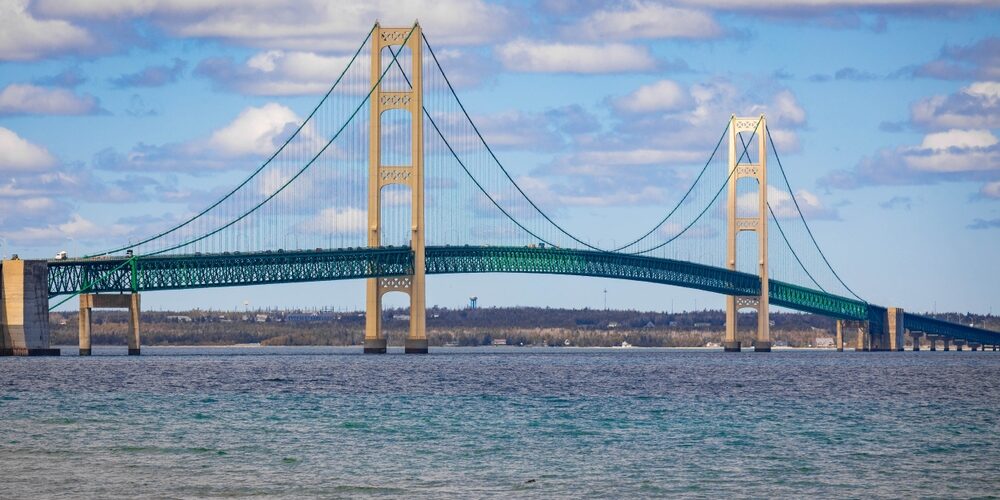The Mighty Mackinac Bridge: A Testament to Engineering and Endurance
Few bridges in the world carry the same sense of awe and pride as Michigan’s Mackinac Bridge. Stretching majestically across the Straits of Mackinac, where Lake Michigan meets Lake Huron, the “Mighty Mac” connects the state’s Upper and Lower Peninsulas. More than a bridge, it stands as a symbol of ingenuity, determination, and unity for the people of Michigan. Connecting Mackinaw in the Lower Peninsula with and St Ignace in the UP, the Mackinac Bridge is the host to over 4 million travelers every year.
The History of the Mackinac Bridge
The idea of connecting Michigan’s two peninsulas dates back to the late 19th century. Before the bridge, travelers relied on ferries to cross the straits—a time-consuming and often treacherous journey, especially during winter. In 1884, railroad companies began discussing the possibility of a bridge or tunnel, but the technology and resources of the time made the vision seem impossible.
By the early 20th century, Michigan’s population and automobile use had grown dramatically. Traffic between the peninsulas surged, and in 1923 the first formal study for a bridge was conducted. It would take another three decades, however, for that dream to materialize. The Michigan Legislature created the Mackinac Bridge Authority in 1950, paving the way for planning, financing, and construction.
Construction began in May 1954 under the supervision of chief engineer Dr. David B. Steinman, one of the most respected bridge designers of the era. His design called for a suspension bridge long enough and strong enough to withstand the area’s fierce winds, icy conditions, and powerful currents. At completion, the Mackinac Bridge measured 26,372 feet (approximately five miles) in total length, with a main span of 3,800 feet—making it the longest suspension bridge between anchorages in the Western Hemisphere when it opened.
After three and a half years of relentless work, the bridge officially opened to traffic on November 1, 1957. The dedication ceremony that summer had drawn over 100,000 visitors, celebrating not just the completion of a major infrastructure project, but the uniting of Michigan into a single, easily traversable state. Since then, the Mackinac Bridge has become an icon of Michigan identity and a crucial link in the region’s economy, tourism, and culture.




































